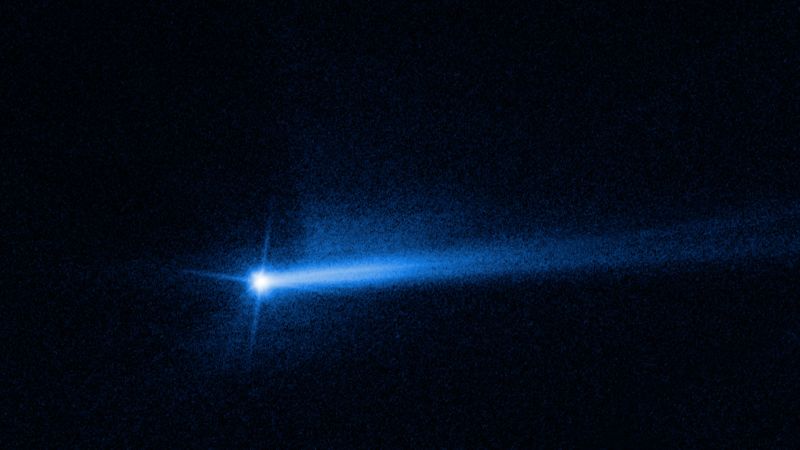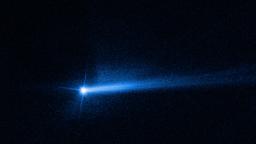

Sign up for CNN’s Wonder Theory science newsletter. Explore the universe with news on fascinating discoveries, scientific advancements and more.
CNN
—
The Hubble Space Telescope captured a new snapshot of the asteroid that NASA recently slammed with a spacecraft in an attempt to knock it off course, and the image reveals the clearest look yet at some unexpected results from the mission — a twin tail of dust trailing behind the asteroid system.
The image, released Thursday, is one of 18 observations that the Hubble telescope has made of the Didymos-Dimorphos asteroid system since NASA’s Double Asteroid Redirection Test, or DART, mission crashed a probe into Dimorphos in September.
“Repeated observations from Hubble over the last several weeks have allowed scientists to present a more complete picture of how the system’s debris cloud has evolved over time,” according to a statement from NASA and the European Space Agency, which jointly operate Hubble.
“The observations show that the ejected material, or ‘ejecta,’ has expanded and faded in brightness as time went on after impact, largely as expected,” the statement reads. “The twin tail is an unexpected development, although similar behavior is commonly seen in comets and active asteroids. The Hubble observations provide the best-quality image of the double-tail to date.”
Scientists are working to understand the significance of the split tail. NASA noted that it’s the northernmost tail that was newly created, and scientists will use data from Hubble in the coming months to examine more closely how it may have formed.
Dimorphos, the target of NASA’s DART mission, is a smaller asteroid that orbits around the larger Didymos. Astronomers anticipated that the mission could be deemed a success if the impact from the DART spacecraft could shorten Dimorphos’ orbit by 10 seconds. But NASA revealed this month that it was able to cut its trajectory down by 32 seconds — from an orbit of 11 hours and 55 minutes to 11 hours and 23 minutes.
The DART mission was the world’s first conducted on behalf of planetary defense, with the goal of testing technology that could one day be used to deflect an asteroid headed for Earth. The mission was also the first time humanity intentionally changed the motion of an object in space.